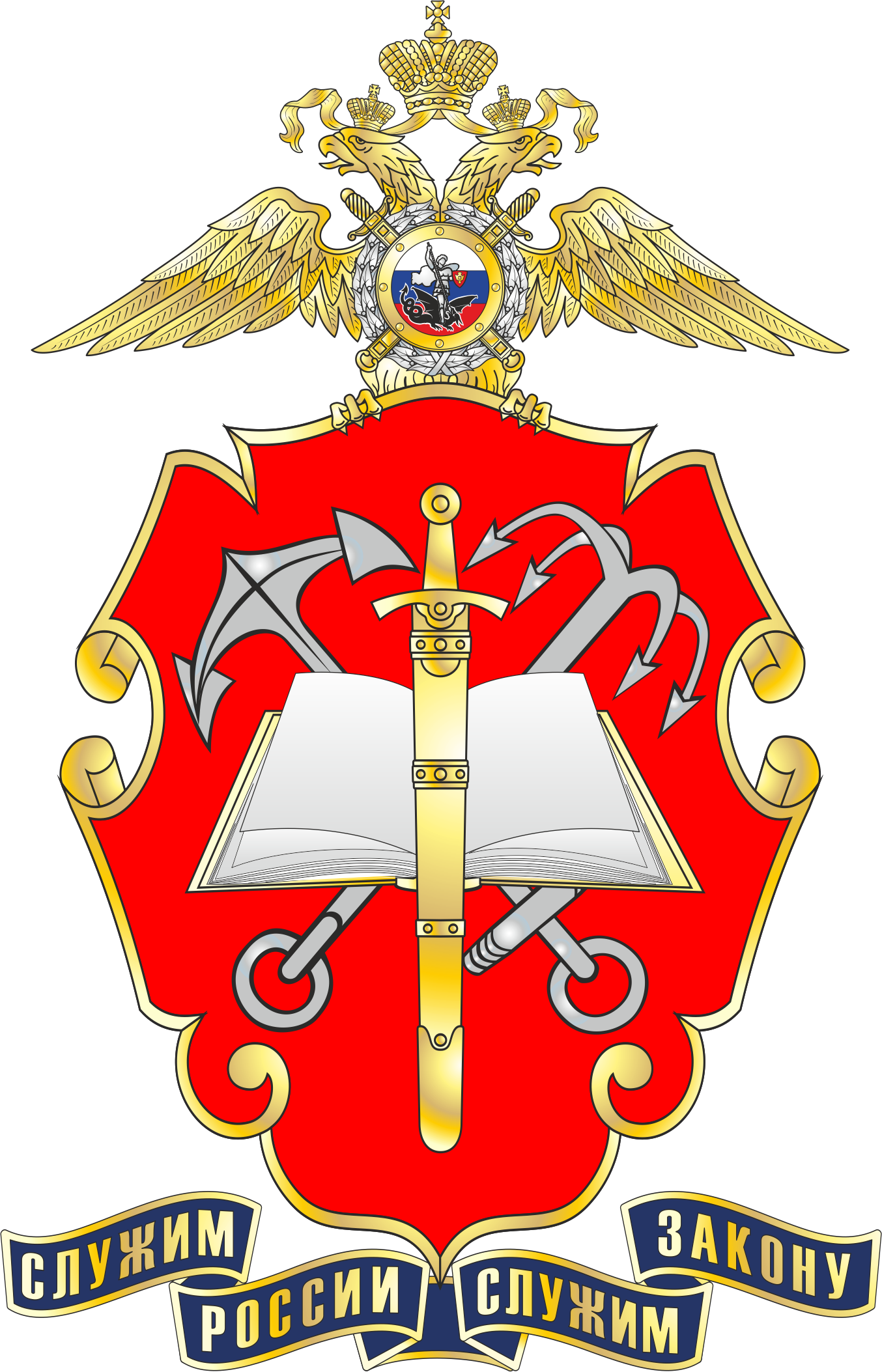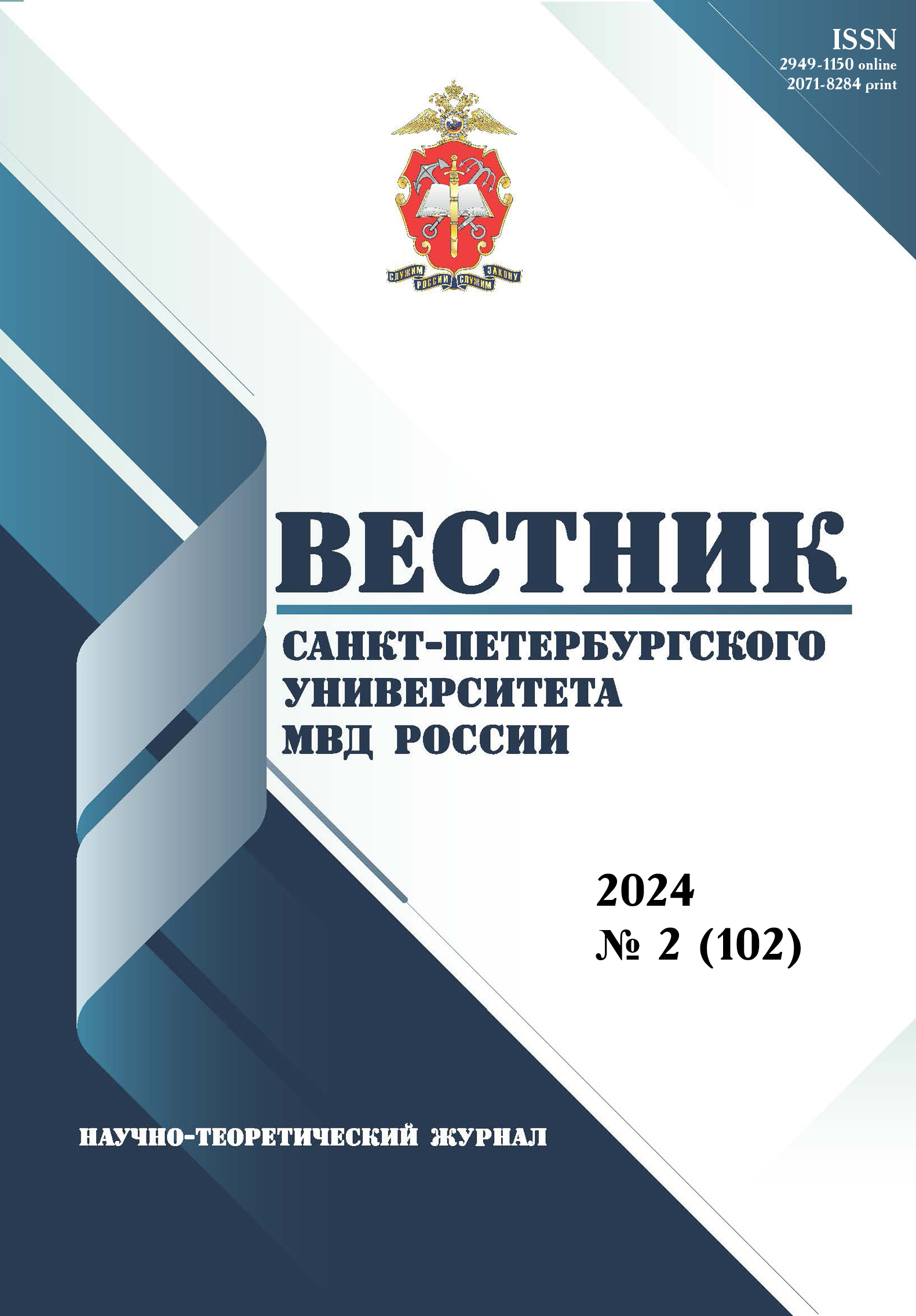from 01.01.2021 to 01.01.2024
Saint Petersburg, St. Petersburg, Russian Federation
UDC 343.9
Introduction. The article deals with the negative socio-legal phenomenon - bribery in the internal affairs bodies. On the basis of actual statistical data and materials of judicial practice the relevance of the research subject is emphasised, as well as the increased social danger of crimes related to bribery committed by employees of internal affairs bodies. For the purpose of a comprehensive study of bribery in internal affairs bodies, the author analyses the elements of criminological characteristics of the phenomenon under consideration: the personality of the perpetrator, determinants, prevention measures. Methods. For a comprehensive study of the problem of bribery in the internal affairs bodies the general scientific methods such as analysis, synthesis, deduction, induction, generalisation were used. Also private-scientific methods were used, such as: analysis of statistical data and judicial practice, interpretation of legal norms and the method of forecasting. Results. Bribery has the greatest specific proportion among all corruptionrelated crimes; employees of internal affairs bodies are the most involved in committing such crimes among all law enforcement officers. Bribery in internal affairs bodies is a complex of interrelated acts that are aimed not only at obtaining benefits by employees, but also at the realisation of other personal interest due to the specifics of service in internal affairs bodies.
bribery, internal affairs bodies, special subject of crime, corruption prevention, corruption offences
1. Zagvyazinskaya O. A., Pavlenko O. V. K voprosu o ponyatii korruptsii: kriminologicheskiy analiz // Nauchnyy al’manakh. – 2016. – № 8-1 (22). – S. 358–362; https://doi.org/10.17117/na.2016.08.01.358.
2. Tikhomirov Yu. A., Trikoz Ye. N. Pravo protiv korruptsii // Zhurnal rossiyskogo prava. – 2007. – № 5 (125). – S. 39–52.
3. Gorshenkov G. N. «Protivodeystviye» i «korruptsiya» kak nauchno ne prorabotannyye ponyatiya / Protivodeystviye korruptsii na federal’nom, regional’nom i munitsipal’nom urovnyakh: materialy Mezhdunarodnoy nauchno-prakticheskoy konferentsii, posvyashchennoy 112-letiyu Yuridicheskogo instituta Tomskogo gosudarstvennogo universiteta i neobkhodimosti razrabotki programmy protivodeystviya korruptsii na munitsipal’nom urovne, 23–24 dekabrya 2010 g. / pod red. V. A. Utkin. – Tomsk: Izdatel’stvo Natsional’nogo issledovatel’skogo Tomskogo gosudarstvennogo universiteta, 2010. – S. 25–29.
4. Ivanova A. A. Viktimologicheskiy aspekt korruptsionnoy sdelki // Aktual’nyye problemy ekonomiki i prava. – 2015. – № 4. – S. 253–260.
5. Pakhomova O. N. Sovremennyye aspekty ponyatiya i sushchnosti dolzhnostnykh prestupleniy // Vestnik Kaliningradskogo filiala Sankt-Peterburgskogo universiteta MVD Rossii. – 2022. – № 3 (69). – S. 12–15.
6. Beschastnova O. V., Mukhambetov R. M. Ugolovno-pravovaya sushchnost’ korruptsionnogo prestupleniya // Nauchnyye vesti. – 2018. – № 5. – S. 37–43.
7. Karpushin M. P., Kurlyandskiy V. I. Ugolovnaya otvetstvennost’ i sostav prestupleniya. – Moskva: Yuridicheskaya literatura, 1974. – 231 s.
8. Sorochkin R. A. Upravlencheskiye funktsii i ponyatiye dolzhnostnogo litsa kak sub”yekta korruptsionnogo prestupleniya // Prolog: zhurnal o prave. – 2021. – № 1. – S. 79–87; https://doi.org/10.21639/2313-6715.2021.1.8.
9. Dineka V. I. Osobennosti pravovogo polozheniya dolzhnostnogo litsa i predstavitelya vlasti // Vestnik ekonomicheskoy bezopasnosti. – 2017. – № 4. – S. 46–50.
10. Sorochkin R. A. Sub”yekt upravlencheskogo korruptsionnogo prestupleniya // Gosudarstvo i pravo. – 2020. – № 11. – C. 154–157; https://doi.org/10.31857/S102694520012534-8.
11. Antonyan Yu. M., Eminov V. Ye. Lichnost’ prestupnika : kriminologo-psikhologicheskoye issledovaniye. – Moskva: INFRA-M, 2010. – 366 s.
12. Strochilova N. V. Osobennosti kriminologicheskoy kharakteristiki lichnosti sotrudnikov organov vnutrennikh del, sovershayushchikh korruptsionnyye prestupleniya // Teoriya i praktika obshchestvennogo razvitiya. – 2009. – № 3–4. – S. 275–279.
13. Sukhodolov A. P., Ivantsov S. V., Sidorenko E. L., Spasennikov B. A. Bytovaya korruptsiya v Rossii: osnovnyye kriminologicheskiye parametry // Vserossiyskiy kriminologicheskiy zhurnal. – 2018. – T. 12. – № 5. – C. 634–640; https://doi.org/10.17150/2500-4255.2018.12(5).634-640.
14. Nomokonov M. V., Rusanova A. A. Bytovaya korruptsiya v rakurse sotsiologicheskogo analiza: regional’nyy aspekt // Biznes. Obrazovaniye. Pravo. – 2014. – № 2 (27). – S. 254–257.
15. Shirshanova Ye. A. Determinanty vzyatochnichestva v organakh vnutrennikh del // Pravo i gosudarstvo: teoriya i praktika. – 2023. – № 7 (223). – S. 306–309; https://doi.org/10.47643/1815-1337_2023_7_306.
16. Veremeyenko V. M. Pravovyye aspekty protivodeystviya vzyatochnichestvu v Respublike Belarus’ // Vestnik Grodnenskogo gosudarstvennogo universiteta imeni Yanki Kupaly. Seriya 4. Pravovedeniye. – 2020. – T. 10. – № 1. – S. 89–96.
17. Zarubina Ye. V. Antikorruptsionnyy standart povedeniya sotrudnikov organov vnutrennikh del // Gosudarstvennoye i munitsipal’noye upravleniye v XXI veke: teoriya, metodologiya, praktika. – 2015. – № 19. – S. 138–143.
18. Mironkina O. N. Profilaktika deviatsiy v oblasti antikorruptsionnogo povedeniya sotrudnikov organov vnutrennikh del Rossiyskoy Federatsii // Rossiyskiy deviantologicheskiy zhurnal. – 2022. – 2 (4). – S. 454–478; https://doi.org/10.35750/2713-0622-2022-4-454-478.
19. Kabanov P. A. Antikorruptsionnoye prosveshcheniye kak sredstvo protivodeystviya korruptsii: ponyatiye i soderzhaniye // Aktual’nyye problemy ekonomiki i prava. – 2014. – № 4. – S. 42–51.
20. Vikhryan A. P., Fedorov M. V. Antikorruptsionnoye prosveshcheniye kak faktor obespecheniya sotsial’noy bezopasnosti // Vestnik Rossiyskogo universiteta druzhby narodov. Seriya: Sotsiologiya. – 2020. – T. 20. – № 4. – S. 967–976; https://doi.org/10.22363/2313-2272-2020-20-4-967-976.














